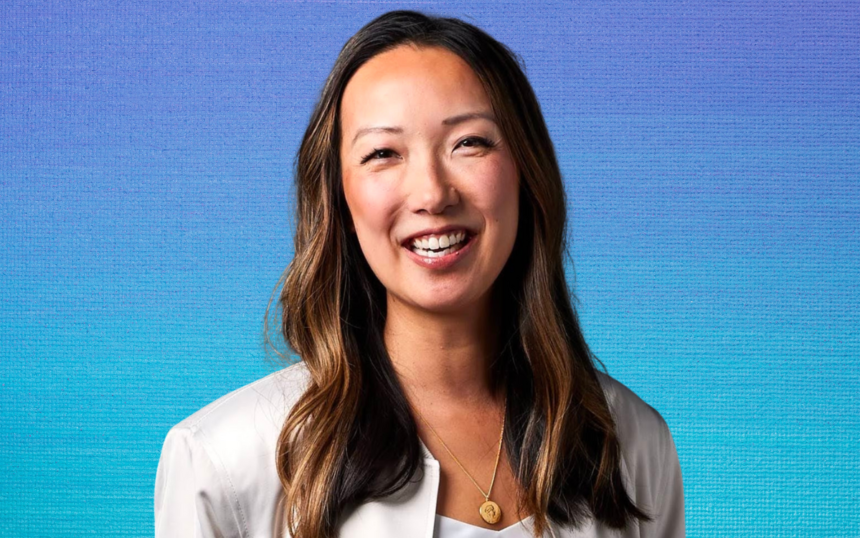In March 2023, just a few months after OpenAI released ChatGPT, Salesforce appointed its first-ever head of AI to lead artificial intelligence efforts across its platforms and tools, including acquisitions like Slack and Tableau.
The San Francisco-based cloud computing powerhouse tapped Clara Shih, the company’s Service Cloud business leader, for the role. Shih had previously run her own startup, Hearsay Systems, after an earlier Salesforce stint leading its AppExchange.
Nearly a year after Shih’s appointment, Salesforce AI’s foundational layers now include Einstein Copilot, Copilot Studio, Prompt Builder, RAG, Hybrid Search, and Einstein Trust Layer. And Shih has stood out as an AI leader at an explosive moment in the space, with a place on TIME’s 100 Most Influential People in AI 2023.
But Shih says her generative AI ‘aha’ moment actually came back in November 2021, at a meeting with a Italian delegation from fashion brand Gucci as the Covid-19 pandemic raged on.
VB Event
The AI Impact Tour – NYC
We’ll be in New York on February 29 in partnership with Microsoft to discuss how to balance risks and rewards of AI applications. Request an invite to the exclusive event below.
Request an invite
A generative AI ‘aha’ moment
“I remember I came into Salesforce Tower nervously with my mask on,” she told VentureBeat in a recent interview. The Gucci team, which included the company’s CIO as well as their head of customer service, met with Shih and Salesforce chief scientist (and previous Stanford professor) Silvio Savarese to discuss their interest in “high-touch, very accurate” AI to assist their customer service advisors.
“They didn’t want it to feel like a chatbot, they didn’t want it to feel rote at all. In fact, they don’t believe in chatbots,” Shih said. And yet, Gucci had the same challenges as nearly every brand during the pandemic — customer service reps working from home, for example, as well as teams running at less-than-full capacity.
After Shih explained Salesforce’s service offerings for chatbots and agent assistance, Savarese “unleashed this crazy idea of large language models,” she recalled, adding that he demoed Salesforce’s CodeGen for the group — an open source large language model that had been in the works since 2018 and publicly debuted a few months after the Gucci meeting. At the time, CodeGen was the largest open-source LLM, with up to 16B parameters.
“That was the first time I’d ever heard of [large language models] and I just remember thinking to myself, ‘this can’t be real, this is like a fairy tale, it sounds like fiction,” she said. “I wondered if the customer was going to believe this.”
Earlier Salesforce research jump-started its gen AI efforts
It was real — in fact, Salesforce researchers had been working on LLMs and persisting for years, Shih said, even though reputable journals kept rejecting their papers (including one on prompt engineering).
But ultimately, it was the CodeGen research that jump-started Salesforce’s ability to get generative AI products to market quickly after the landscape exploded post-ChatGPT.
In March 2023, Salesforce debuted EinsteinGPT, which combined Salesforce’s proprietary AI models with other generative AI models, including from OpenAI. At the time, Shih said EinsteinGPT was “being integrated into every Salesforce cloud, as well as Mulesoft, Tableau and Slack, and will transform every sales, service, marketing and ecommerce experience.”
“People were like, how did you do that [in only] three months?” Shih recalled. “Well, the secret was it was actually 15 months of work.”
The work paid off: Gucci came on board as the first pilot customer for Einstein GPT.
“Kudos to Gucci for saying this does sound crazy, but why not? We don’t have any other choice. Let’s try it,” said Shih. EinsteinGPT immediately became far more than a chatbot to address staffing issue, she added — it helped Gucci customer service reps with AI coaching to drive sales.
“These service reps actually become revenue producers,” said Shih. “Instead of having to go through months of training to learn about every single product and how it was designed and the materials, they get AI coaching so they’re able to become these brand storytellers.”
ChatGPT was the spark that lit the fire of gen AI adoption
Still, ChatGPT was undoubtedly the spark that lit the fire of gen AI adoption in 2023, Shih admitted.
“ChatGPT did change everything,” she said. Suddenly, every company seemed to consider gen AI a top priority. By March, her phone was ringing off the hook.
“I went from begging to meet with people about customer service AI to me having to turn down people and having to hire tons more people,” she said. “It was like a dozen meetings every single day even on weekends — and it was great because we had this body of work we’d been prototyping with Gucci, so we had worked out the kinks.”
That doesn’t mean that she can relax, she emphasized. “AI is a moving target,” she said. “Every few weeks a new paper comes out that changes everything. And yet you still need to ensure you execute on the initial plan that you have.” Sometimes that means changing or scrapping the plan, she added, but “often you have to carry on, as well as explore new ideas.”
Shih relies on Geoffrey Moore’s Zone to Win framework
To do that, Shih said a helpful innovation framework she uses is Geoffrey Moore’s Zone to Win: Organizing to Compete in an Age of Disruption.
“You can phase out different horizons of innovation,” she explained. “Last January and February, we said ‘let’s focus on getting a product out the door that’s immediately useful to our customers.’ We’re going to do a lot more other stuff, but what’s the first step?”
That — which she calls “Horizon 1” — is what Salesforce launched in the market with Einstein GPT, which included targeted options for each department of users, including Sales GPT, ServiceGPT, MarketingGBT and SlackGPT.
“We basically looked at each department and said, where are the bottlenecks?” she explained. “Where are the mundane tasks that AI could just automate 80% and let the person focus on higher order relationship building or problem solving?”
The next level, Horizon 2, is about transforming the entire company. “It’s not just about adding an AI feature to Sales Cloud or Slack,” she said. “We need to remake all of Sales Cloud to be AI. We need to remake all of Slack to be AI. We need to remake all of the Salesforce platform to be AI and that is where I’m really partnering with each of our GMs for every Salesforce Cloud to be able to do that.”
At the same time, Shih also emphasizes the third level, Horizon 3 — the need to continue to explore and prototype and experiment and learn. “These are different experiments, [such as] building small models focused on specific domains instead of a foundational model,” she said.
Shih heads to AI hackathons and dinners regularly
Shih said that as an entrepreneur and builder, she loves the fast, startup-like pace of AI at Salesforce.
“I came back to Salesforce because I wanted to learn how to run a business at scale,” she said. “At my startup, we had a few 100 people and tens of millions of dollars in revenue. At Salesforce, I got to run a $5 billion business at scale.”
In an effort to keep up, she sets aside a few hours each week to catch up on learning and reading the latest AI research papers — and doesn’t hesitate to use AI to do so.
“I have a system where I actually use gen AI to summarize a bunch of podcasts, which really helps,” she said. “Then, based on the summaries, I pick which ones in which sections I actually want to go deep and read the whole transcript, or actually listen or watch.”
Shih added that she also spends time every week going to AI hackathons and founder dinners — which, for someone who loves to learn, can lead to late nights of long discussions reminiscent of the heady days of the MarTech renaissance back in the late aughts and early 2010s.
“I was just at a dinner a couple nights ago — it felt like back when I started my social media marketing company in 2009 and we knew it was going to be big and we didn’t know what it was going look like and we were just trading ideas and blowing each other’s minds,” she said. The dinner, she pointed out, was supposed to last for 90 minutes, but the group talked for five hours.
“I have young kids at home, so I normally don’t stay out until almost midnight on a weeknight,” she said. “But we just lost track of time.”




